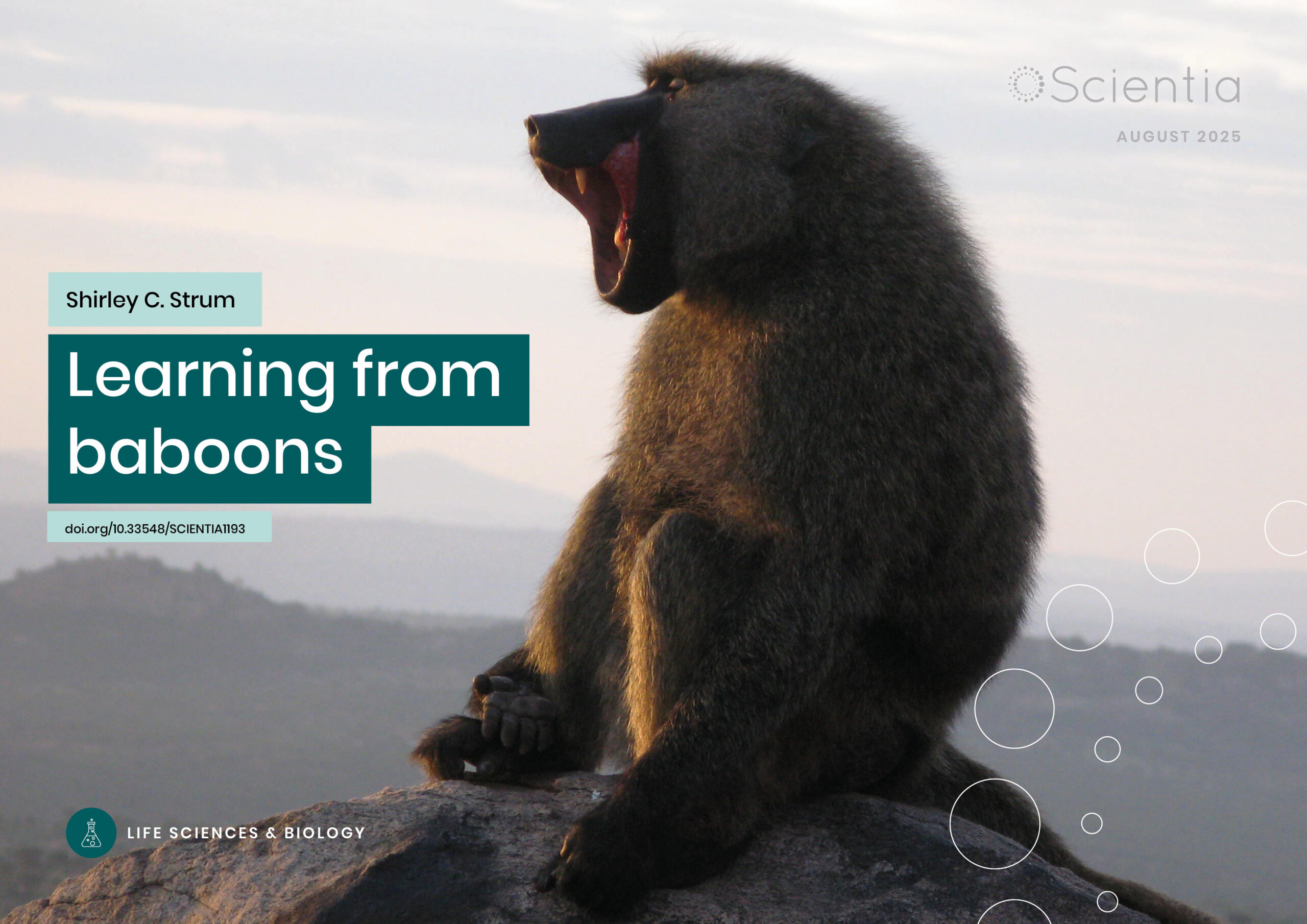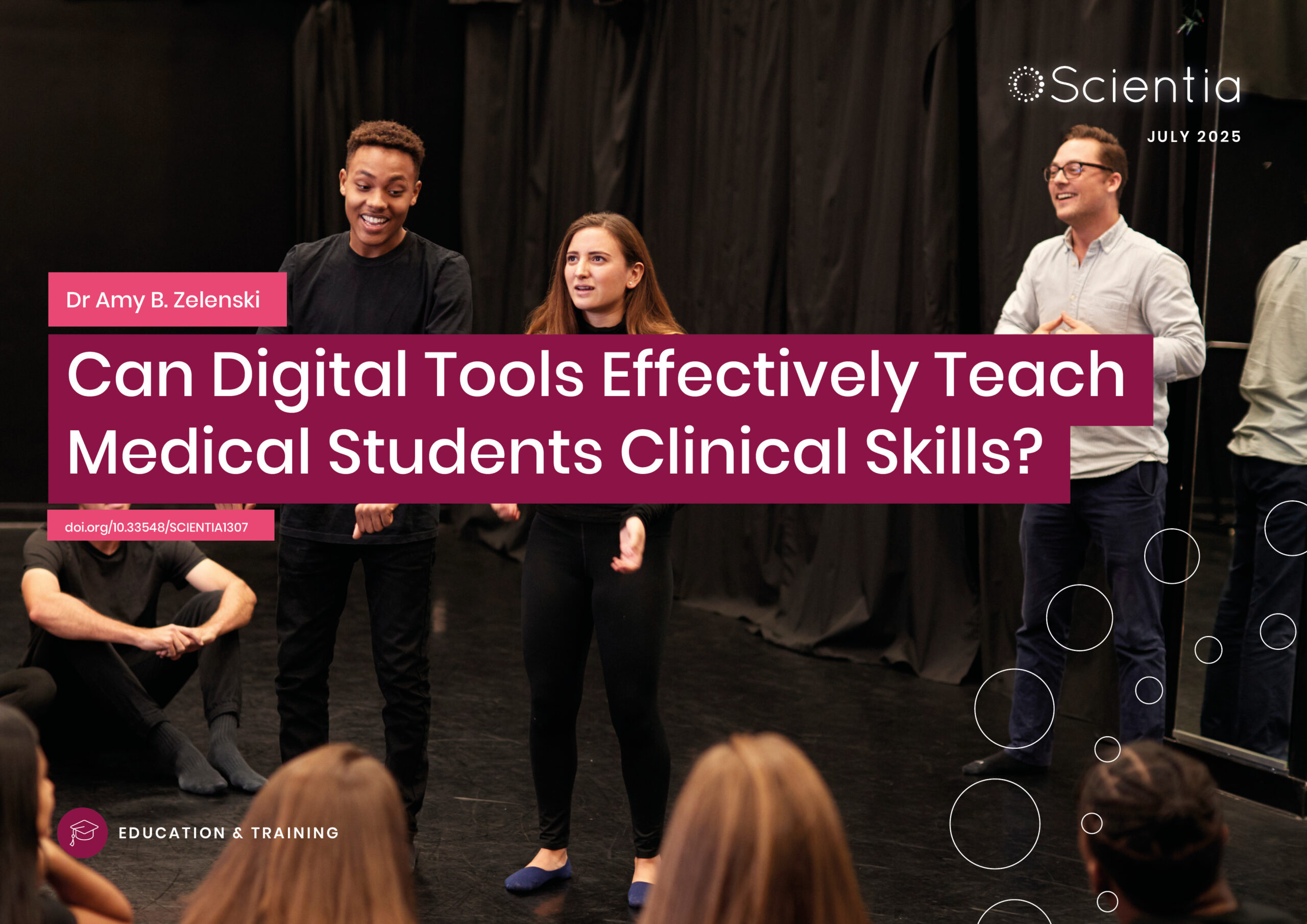Dr Patrick C. Still – Using Plants as a Source of Anti-Cancer Compounds for Undergraduate Research Experiences
Cancer, in all its forms, is one of the major causes of death across the world and we are in urgent need of more effective interventions for this global killer. Drugs used to treat diseases like cancer can be either synthetic in origin, semi-synthetic derivatives of natural products, or unmodified natural products. Dr Patrick Still and his team at California State University, Dominguez Hills (CSUDH), conduct research to identify and biologically screen anti-cancer compounds derived specifically from plant materials. Studies involving structure elucidation and biological testing of compounds from plants have provided undergraduate research experiences for students across chemical and biological sciences majors on the CSUDH campus.
Natural Products Analysis for Workforce Readiness
Cancer accounts for about one in four deaths in the USA and is second only to heart disease in terms of lives lost. Healthier lifestyles, more routine screening and the development of increasingly advanced treatments have helped reduce the number of cancer-related deaths but only by about 2% each year. Unsurprisingly, efforts to further reduce the mortality rate remain a priority for researchers.
Dr Patrick Still’s laboratory at California State University, Dominguez Hills, focuses on discovering natural products from plants that show activity against cancer cells. As the name implies, natural products are molecules which are produced in plants as well as animals, bacteria, marine organisms and fungi. Dr Still explains, ‘Plants have been a source of drugs to treat human disease for centuries. With the rise of Organic Chemistry as a formal discipline in the early 1800s, many of the active compounds found in plant extracts were chemically elucidated.’
Undergraduate research in natural products chemistry while enrolled in chemical or biological sciences majors provides students with workforce readiness skill-sets that potential employers find desirable. Once the extraction from the plant material is completed, independent study students are guided through operating in-house biological assays on semi-purified chromatographic subfractions. In a process known as bioactivity-guided fractionation, only the subfractions showing activity against cancer cells are further purified. The iterative process of purification and testing against cancer cells is repeated until a purified compound is obtained. Testing is carried out using various types of cancer cells including breast, brain and pancreatic cancer cells grown for the purposes of testing (in vitro), or within an organism (in vivo). The former is normally carried out first, while the latter is conducted through collaborations with laboratories that specialise in animal studies.
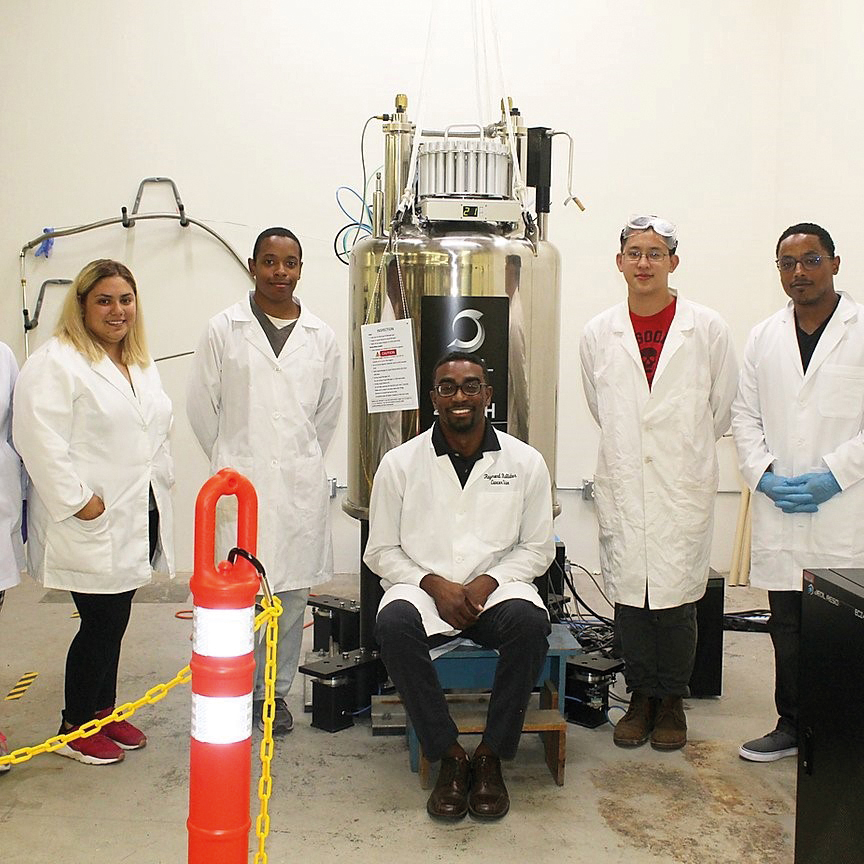
Dr Patrick Still and his team. Credit Patrick Still.
Using a range of chemical techniques, potential lead compounds can be isolated and then analysed. Dr Still and his team use an analytical technique known as nuclear magnetic resonance (NMR) spectroscopy to ‘elucidate the chemical structure of biologically active compounds we isolate from nature.’ Broadly speaking, NMR allows scientists to identify the positions of the hydrogen and carbon atoms in a molecule, and how the atoms connect together. Knowing the detailed structure helps the team identify if the molecule is novel, in other words, whether it has been reported previously in the chemical literature. Undergraduates, in sum, solidify skill-sets in compound purification, cell culture and spectroscopy during the bioactivity-guided isolation process.
‘Finding anti-cancer compounds provides workforce readiness skill-sets for undergraduate research experiences.’
Anti-cancer Agents That Also Affect the Central Nervous System
Receptors are parts of the cell which are responsible for exchanging messages and triggering biochemical events. They achieve this by receiving molecules or ions with the required structure, in a similar way to which a key can fit into a lock. A molecule that triggers a biochemical event by binding a receptor is an agonist. Compounds which block or reduce the exchange of signal transmission are known as antagonists.
One of Dr Still’s most important achievements to date is the isolation of a cytotoxic nicotinic receptor antagonist known as ‘Microgrewiapine A’, a piperidine-class alkaloid. The compound was purified from the shrub Microcos paniculata collected in Vietnam and it was discovered that only micromolar concentrations were needed to inhibit the proliferation of cancerous colon cells. Microgrewiapine A was found to have antagonistic activity with 60 and 70% inhibition against the human a4b2 and a3b4 nicotinic acetylcholine receptors (nAChR), respectively. This was the first example of a dual cytotoxic and nAChR piperidine antagonist to have been isolated from the genus Microcos.
It was determined that the concentration of Microgrewiapine A needed to inhibit healthy colon cells was about five times higher than the levels needed to inhibit the same proportion of cancerous colon cells. This shows that Microgrewiapine A can effectively target cancerous cells over healthy cells, which, in general, is a critical requirement for all anti-cancer treatments.

Suppressing the Spread of Melanoma
One of the limitations of cancer treatments is how these therapies also affect the white blood cells that fight infection. For example, chemotherapy not only reduces the size of tumours but in some cases also lowers the number of white blood cells. Depletion of the immune response is an undesirable effect of chemotherapy since stimulation of innate immunity is associated with fighting off a variety of cancers.
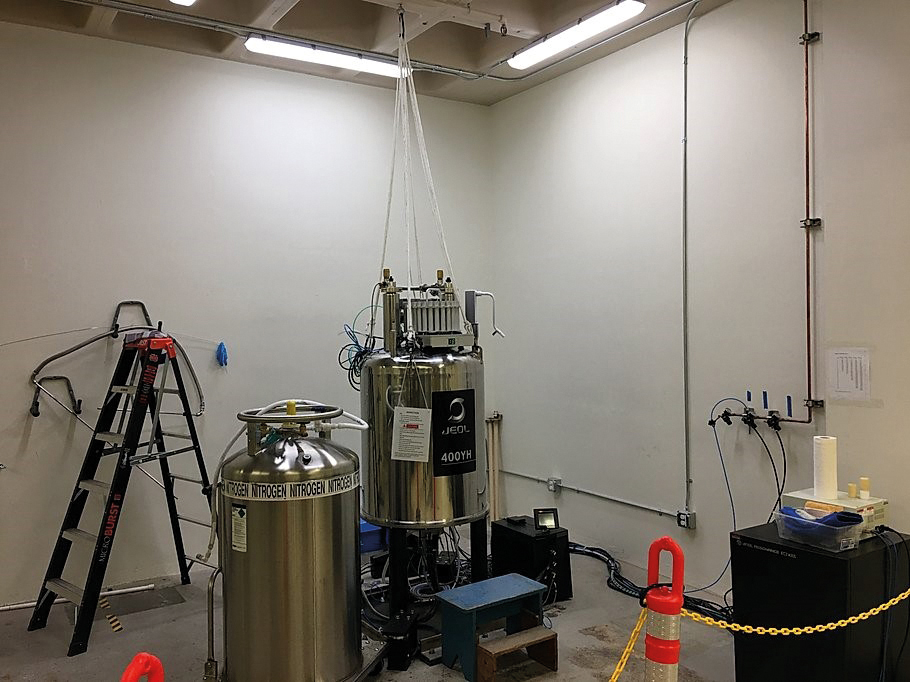
Credit Patrick Still.
Dr Still was involved in a collaborative study investigating ellagic acid and ellagic acid peracetate (a chemically modified form), studied in the context of melanoma. Ellagic acid occurs naturally in many dietary fruits with reports of anti-tumour activity. While there are published in vitro studies for both compounds, there were no in vivo results of ellagic acid peracetate available at that time.
In contrast to the purification of a compound from the crude plant extract, this collaborative study prepared ellagic acid and ellagic acid peracetate by synthetic means and published these synthetic procedures and in vivo work in 2012. The results were encouraging, showing that while ellagic acid did not significantly reduce tumour size, mice treated with ellagic acid peracetate showed a 70% decrease in the original weight of the tumour.
The team also characterised the immunomodulatory role of both compounds and found that ellagic acid peracetate raised the count of white blood cells. Meanwhile, ellagic acid did not result in any increase to white blood cell count. Importantly, natural killer cell levels were unaffected after the administration of ellagic acid peracetate. These combined results show that ellagic acid peracetate not only targets melanoma but also increases the natural immunity levels of the host.
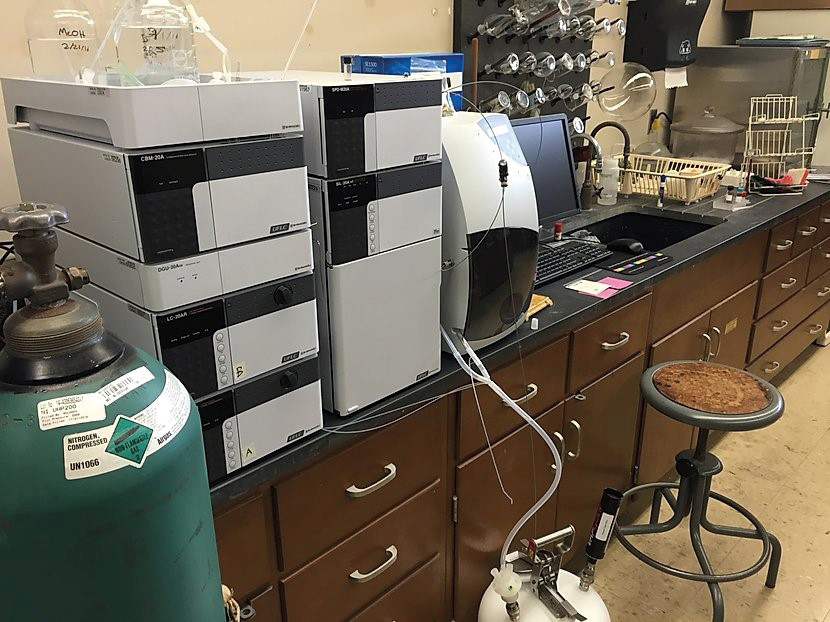
Credit Patrick Still.
Using Repositories for Bioactive Compound Discovery
Dr Still and his team’s future research goals are now to harness the materials stored at the National Cancer Institute Natural Products Repository in the USA. The repository holds a large database of approximately 80,000 plant-based specimens, many of which could prove to have promising biological activities against cancers like melanoma. This exciting work may allow Dr Still’s team to provide an even better understanding of how best we might be able to eventually combat cancer utilising the power of nature. These future research projects involving extracts screened in-house will continue to provide projects for undergraduates to discover new biological activities and hone knowledge of organic structure analysis using methods that industrial employers find desirable in a new hire.
Reference
https://doi.org/10.33548/SCIENTIA569
Meet the researcher
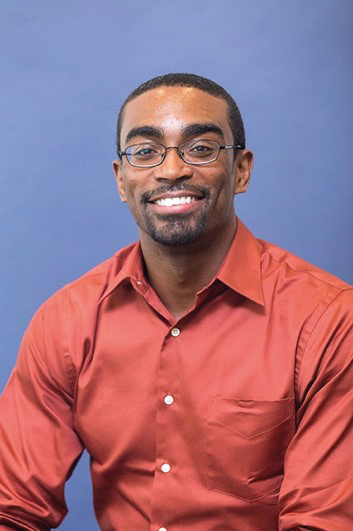
Dr Patrick C. Still
Department of Chemistry and Biochemistry
California State University, Dominguez Hills
Carson, CA
USA
Dr Patrick C. Still received his PhD in Medicinal Chemistry from The Ohio State University, Columbus, in 2013. Following this, Dr Still carried out postdoctoral research for two years at the University of California, Santa Cruz, before joining the faculty at California State University, Dominguez Hills (CSUDH) in 2015. Dr Still’s research group focuses on extracting natural products from plant material and identifying bioactive molecules using in-house and collaborative cell-based screening. A major part of Dr Still’s research is the structural elucidation of bioactive molecules using nuclear magnetic resonance (NMR). Dr Still lead the establishment of the NMR Facility at CSUDH by coordinating the purchase of the $400,000 instrument for the university and is also responsible for new user training and maintenance.
CONTACT
W: https://www.naturalproductsgroupcsudh.com/
KEY COLLABORATORS
Dr A. Douglas Kinghorn, The Ohio State University, Department of Medicinal Chemistry & Pharmacognosy
Dr Yulin Ren, The Ohio State University, Department of Medicinal Chemistry & Pharmacognosy
Dr Li Pan, Research Scientist Taste Innovation, Kerry
Dr Dennis McKay, Pharmacology, The Ohio State University, Department of Pharmacology
FUNDING
National Institutes of Health (NIH)/National Institute of General Medical Sciences (NIGMS)
‘Discovery of Natural Products from Botanical Sources’ (Grant: 5SC2GM12272 PI: Still)
WM Keck Foundation
‘Spectroscopy Advancement Laboratories for Diverse Students’ STEM Success (SALDS3): PI: Still
FURTHER READING
M Waseem, J Q.-L. Williams, A Thangavel, PC Still, P Ymele-Leki, A structural analog of ralfuranones and flavipesins promotes biofilm formation by Vibrio cholerae, PLoS ONE, 2019, 14, e0215273.
LB Pérez, PC Still, CB Naman, Y Ren, L Pan, H Chai, EJC de Blanco, TN Ninh, BV Thanh, SM Swanson, DD Soejarto, AD Kinghorn, Investigation of Vietnamese Plants for Potential Anticancer Agents, Phytochemistry Reviews, 2014, 13, 727.

Want to republish our articles?
We encourage all formats of sharing and republishing of our articles. Whether you want to host on your website, publication or blog, we welcome this. Find out more
Creative Commons Licence
(CC BY 4.0)
This work is licensed under a Creative Commons Attribution 4.0 International License. 
What does this mean?
Share: You can copy and redistribute the material in any medium or format
Adapt: You can change, and build upon the material for any purpose, even commercially.
Credit: You must give appropriate credit, provide a link to the license, and indicate if changes were made.
More articles you may like
Shirley C. Strum | Learning from baboons
Shirley C. Strum has spent over 50 years studying wild baboons in Kenya. During that time, she has pioneered new ideas about baboons, about society, about nature, about science and about evolution. As she recounts in her new book Echoes of Our Origins: baboons, humans and nature, she was the first to suggest that baboon society is not based on male aggression and dominance, but that both males and females have effective non-aggressive alternatives. These “social strategies of competition and defence” rely on social relationships that create a “social contract” based on social sophistication, social intelligence, and collaboration, even without the benefits of human characteristics like symbols, language and culture.
Dr JoLee Sasakamoose – Dr Mamata Pandey | Empowering Indigenous Health: The Indigenous Wellness Research Collaborative in Saskatchewan
The Indigenous Wellness Research Collaborative is a transformative alliance dedicated to advancing health systems and service delivery for Indigenous communities across Saskatchewan. Founded a decade ago and co-led by Dr Mamata Pandey, a research scientist at the Saskatchewan Health Authority, and Dr JoLee Sasakamoose (M’Chigeeng First Nation), Canadian Institute of Health Research Chair in Indigenous Wellness and Health Equity at the University of Regina, their team’s work is rooted in a commitment to Indigenous leadership and community-defined wellness goals. Guided by the Cultural Responsiveness Framework, the Collaborative prioritises creating ethical spaces that serve as a middle ground for respect, reciprocity, and authentic partnerships. The team employs a strengths-based approach to health research, centering Indigenous methodologies that respect the interconnectedness of spiritual, mental, emotional, and physical well-being.
Dr Amy B. Zelenski | Can Digital Tools Effectively Teach Medical Students Clinical Skills?
Medical students often experience a decline in empathy as they progress through their training, an issue with real consequences for patient care. A new study from the University of Wisconsin explores an unexpected remedy: Zoom-based improvisational theatre. In the first randomized controlled trial of its kind, researchers found that short online improv sessions helped students improve perspective-taking, reduce emotional distress, and deeply reflect on patient relationships and power dynamics. As telemedicine becomes increasingly common, this approach to teaching empathy could offer a timely, effective, and engaging tool to help future doctors more meaningfully connect with their patients.
Professor Jaya Krishnan | Revolutionary Gene Therapy Helps Hearts Regenerate After Heart Attacks
Myocardial infarction, commonly termed as a heart attack, is a major cause of death and poor health worldwide. Regenerating heart tissue is an exciting and promising concept that can have significant benefits in myocardial infarctions and related diseases, but this has not yet been achieved in real-life clinical treatments. In a collaboration between Goethe University Frankfurt and Goethe University Hospital, Professor Jaya Krishnan and colleagues address this by controlling pathologic genes involved in the development of heart failure that develops after heart attacks. The researchers demonstrate a new way of treating heart disease by aiding in the division and regrowth of heart cells after a heart attack.

